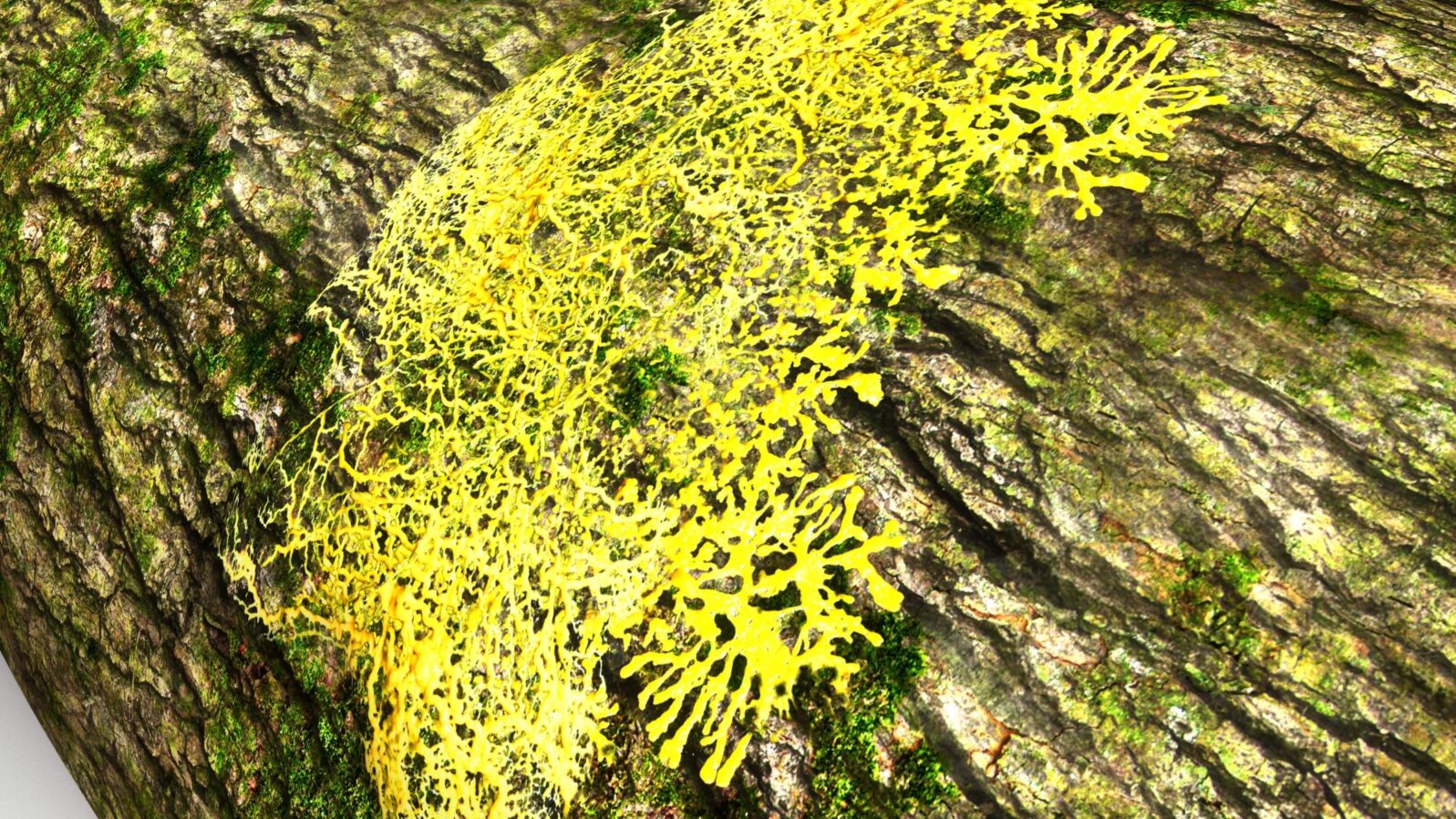Is a Brain Really Needed for Thinking?
The “blob,” now on display at the Paris Zoo, forces the questionIt’s not really clear what the Paris Zoo’s blob is, in scientific terms, but it is definitely very much alive:
It’s a single-celled organism with millions of nuclei that creeps along forest floors in search of bacteria, fungal spores and other microbes. It can detect and digest these substances, but it doesn’t have a mouth or stomach…
But perhaps the most remarkable thing about P. polycephalum is that it possesses a kind of intelligence—though it has no brain. Research has shown, for instance, that the organism can find the shortest path through a maze with food at its start and end. By leaving a trail of slime in its wake, P. polycephalum avoids areas that it has already visited—a type of “externalized spatial ‘memory,’” scientists say. A 2016 study found that P. polycephalum could learn to avoid quinine or caffeine, known repellants for the organism.
Brigit Katz, “Paris Zoo Unveils Bizarre, Brainless ‘Blob’ Capable of Learning—and Eating Oatmeal” at Smithsonian.com
Polycephalum’s type of organism is thought to have existed for roughly a billion years though it has only been studied intensively in recent decades. It is technically called a “protist” (a catch-all category for life forms that are hard to classify). It makes decisions with no apparent source of intelligence:
Many of the processes we might consider fundamental features of the brain, such as sensory integration, decision-making and now, learning, have all been displayed in these non-neural organisms.
Romain P. Boisseau, David Vogel and Audrey Dussutour, “Habituation in non-neural organisms: evidence from slime moulds” at Proceedings of the Royal Society B
Apparent brain functions without a brain are not unprecedented. Amoebas (which also form slime molds when threatened by a food shortage) have also attracted attention recently for acing the “Traveling Salesman” problem that has befuddled computers for years. That is because the calculations needed for the most efficient “sales” route grow very rapidly: For six cities, there are 360 routes. For ten cities, there are millions of routes. But, in search of oatmeal, the amoeba performs more efficiently than a computer:
… the advantage is that the amoeba doesn’t have to calculate every individual path like most computer algorithms do. Instead, the amoeba just reacts passively to the conditions and figures out the best possible arrangement by itself. What this means is that for the amoeba, adding more cities doesn’t increase the amount of time it takes to solve the problem.
Avery Thompson, “A Single Cell Hints at a Solution to the Biggest Problem in Computer Science” at Popular Mechanics
And when amoebas form slime molds, they behave—like the Parisian “blob”—as if they were a single thinking organism:
Consider Dictyostelium discoides, one of the 900 species known as slime mold. Don’t let the disgusting name deter you; the example is informative. Faced with a food shortage, thousands of brainless, one-celled amoebas living underground hurry to form a single blob. The blob lengthens to about 1/25 of an inch (or one millimeter) and resembles a tiny slug. Then the “slug” crawls toward light, like a worm, and thus arrives at the soil surface.
Different amoebas play different roles inside the blob/slug. Some enable it to move. One percent behave like police: they crawl around looking for infectious bacteria. If they find one, they ingest it and leave the blob. They die, but the slug survives.
Once above ground, the slug reorganizes itself into something more like a fungus. Some of the amoebas form a stiff stalk, while others make their way to the top and become a sticky ball. They then attach the whole slime mold to an animal’s foot. Having secured a means of transportation, they drop off where a food source is found. Then they all disperse as one-celled creatures again.
News, Is an amoeba smarter than your computer?” at Mind Matters News
In search of bread crumbs, slime molds have managed to replicate the highway map of Canada. That is, without assistance, they found the shortest routes to far-distant cities, much as surveyors would.
None of these feats of cognition suggests that slime molds are conscious, have personalities, or use higher-order thinking skills. Rather, they replicate some of the functions of a physical brain without having one. And we really don’t know at present how they do it.
But then, plants don’t have minds or brains either, yet they communicate extensively with each other and even use the neurotransmitter glutamate to speed transmission within themselves. Even bacteria can make decisions, without any basis for a brain at all.
So, in addition to the many puzzles we face in understanding the relationship between the immaterial human mind and the material human brain, we are discovering some life forms that can manage “sensory integration, decision-making and now, learning” without a physical brain. It must be an interesting time to be a neuroscientist!
See also: Is an amoeba smarter than your computer? Hype aside, the microbe’s math skills ace the Traveling Salesman problem and may help with cybersecurity
Can plants be as smart as animals?
Yes, plants have nervous systems too. Not only that but, like mammals, they use glutamate to speed transmission
Even bacteria are purpose-driven The recent finding that bacteria can make individual decisions may help design better antibiotics
